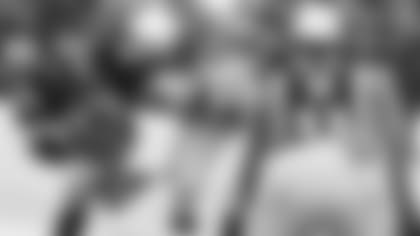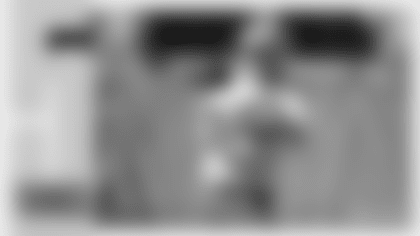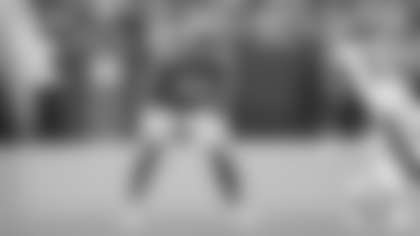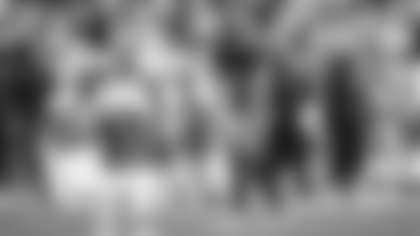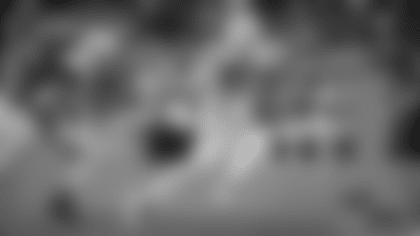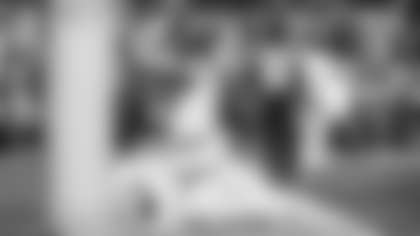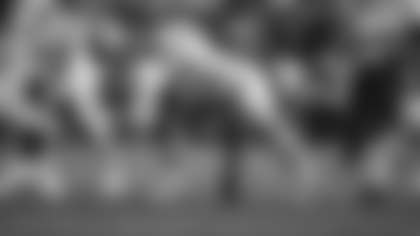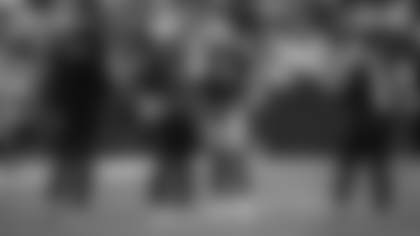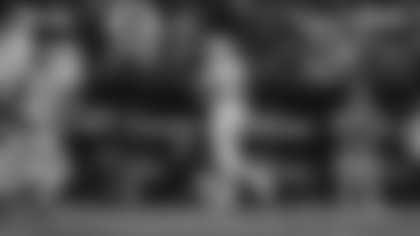The Packers' defensive backfield of the 1960s was a star-studded unit. There was Herb Adderley at cornerback, who's now in the Pro Football Hall of Fame. He's joined in Canton by safety Willie Wood. Also at cornerback was Bob Jeter, a multiple All-Pro selection. Less heralded was Doug Hart, and he had the versatility to start at both cornerback and safety in his career.
Hart played for the Packers from 1964-71 and spent '63 on the team's taxi squad, the precursor to the practice squad of today. He appeared in 112 games, intercepted 15 passes and returned three for touchdowns. Including having scored additional TDs off a blocked field goal and a fumble return, his five defensive touchdowns are tied for fourth in club history.
So, among a secondary full of memorable figures in Packers history, Hart more than held his own. He was also part of three NFL championship teams, including Super Bowls I and II.
"I played with a good group, I made some contributions and I think I had a good career," Hart said this week from his home south of Minneapolis.
The beginnings of Hart's NFL career were as humble as that description of his nine years in Green Bay. Before departing the University of Texas-Arlington, where he had played running back and defensive back, Hart had been getting questionnaires in the mail from both AFL and NFL teams, and he sent back his height and weight and few other details.
Hart had three contract offers, from the St. Louis Cardinals and Pittsburgh Steelers of the NFL, and from the Dallas Texans of the AFL. Hart explains his improbable journey from here.
"I picked the Cardinals because they had a pension. I went there and all of their defensive backs had returned, and I got cut, so I went home, applied for a job at Bell Helicopters and got one. I had put football behind me and I was living with my mother," Hart said.
For those two days, Hart was part of a manufacturing process at Bell roughly explained as sanding the residue from aluminum sheets after holes were punched in them.
"I came home from work after the second day and my mother told me the Green Bay Packers had called. I always thought I was finished with football and that I wanted to be an attorney. At the same time, I wanted to give it one more chance," he said.
So he returned the call to Packers personnel director Pat Peppler. Green Bay was playing a preseason game at Dallas and Hart was invited to the team hotel. Peppler woke up Lombardi from an afternoon nap to meet Hart, and they talked about the defensive back signing with the team.
"Lombardi went kind of quiet, and he was running his hand through his hair. I found out afterward that's what he did when he was trying to make a decision. They asked me to practice for two days in Dallas. I was thinking I didn't want to miss this chance, so I called my boss at Bell for a leave of absence," Hart said.
After two days of practice, Hart suited up against the Cowboys wearing No. 22, the same jersey number veteran running back Elijah Pitts wore during the contest. Hart didn't do anything particularly spectacular in the game, but he must have made an impression.
"After that they wanted me to fly to Green Bay, so I called my boss at Bell and asked him for my paycheck for two days of work. In the end, Lombardi said I was going to be on the taxi squad as a rookie for $500 a week. That was more money than I'd ever seen in my life."
In '65, Hart became a starter at right cornerback after Jesse Whittenton was injured, and had a career-high four interceptions and returned a fumble 20 yards for a touchdown as the Packers went 10-3-1 and won the NFL Championship.
In '66, he was a reserve behind Jeter as Green Bay posted a 12-2 record and defeated Kansas City, 35-10, in Super Bowl I in what Hart deems the most satisfying victory of his career.
"I think that might be the most revered win by everyone on those teams," he said. "We were representing the NFL, playing a new league that had been bad-mouthing us and we thumped them. Lombardi said to the press that the Chiefs weren't as good as they thought they were."
Hart still remembers the defensive calls that his group would make in the secondary, and the teamwork it took to cover opposing targets while playing man-to-man on every play. From 1965-67, the Packers only allowed an average of 14.2 points a game.
"It was a disciplined, very controlled system and we knew how to win," Hart said. "The way we played was very intellectual and we were always thinking on our feet out on the field. We believed in the system because of the success we had."
After serving as a reserve at both cornerback and safety, Hart would become the starter at strong safety in '69, and also witness the gradual decline of the Packers after Lombardi's retirement from coaching. The legendary coach had been replaced by his defensive coordinator, Phil Bengtson, and the transition was daunting.
The roster was aging, and a midseason stretch in '69 where Green Bay lost three games by an average of five points after starting off 5-2 doomed the club's playoff chances.
"Bengtson was a brilliant technician, he could design defenses and he was a teacher, but Lombardi had a charisma that as a player you were taken in by," Hart said. "Phil didn't have that ability. Vince was very deliberate in telling us what we had to do to win, and I think we could have won one more championship had he remained head coach. It changed the team's character without him."
Hart remained productive, with an 85-yard interception return for a TD that season, a 76-yarder in '70 and a 69-yard return in '71 where he was tripped up before reaching the end zone. Green Bay went 4-8-2 and he was released by Coach Dan Devine following that season.
After his career, Hart was the owner of an Arctic Cat snowmobile distributorship south of Green Bay for seven years, also racing the vehicles competitively. He was president and chief operating officer of Satellite Industries in Minneapolis for a long stretch and had a stint for two years running a denim mill in North Carolina.
For six years, Hart was connected to his boat as a licensed fly-fishing guide in Fort Myers, Fla., before moving back to Minnesota in 2007 to be closer to his three children and grandchildren.
"The only thing I'm doing now is playing golf and fishing," Hart said. "I visited with Jerry Kramer a couple of weeks ago, and we caught 25 smallmouth bass in Green Bay."
For a listing of more "Where are they now?" stories on packers.com, click here.


